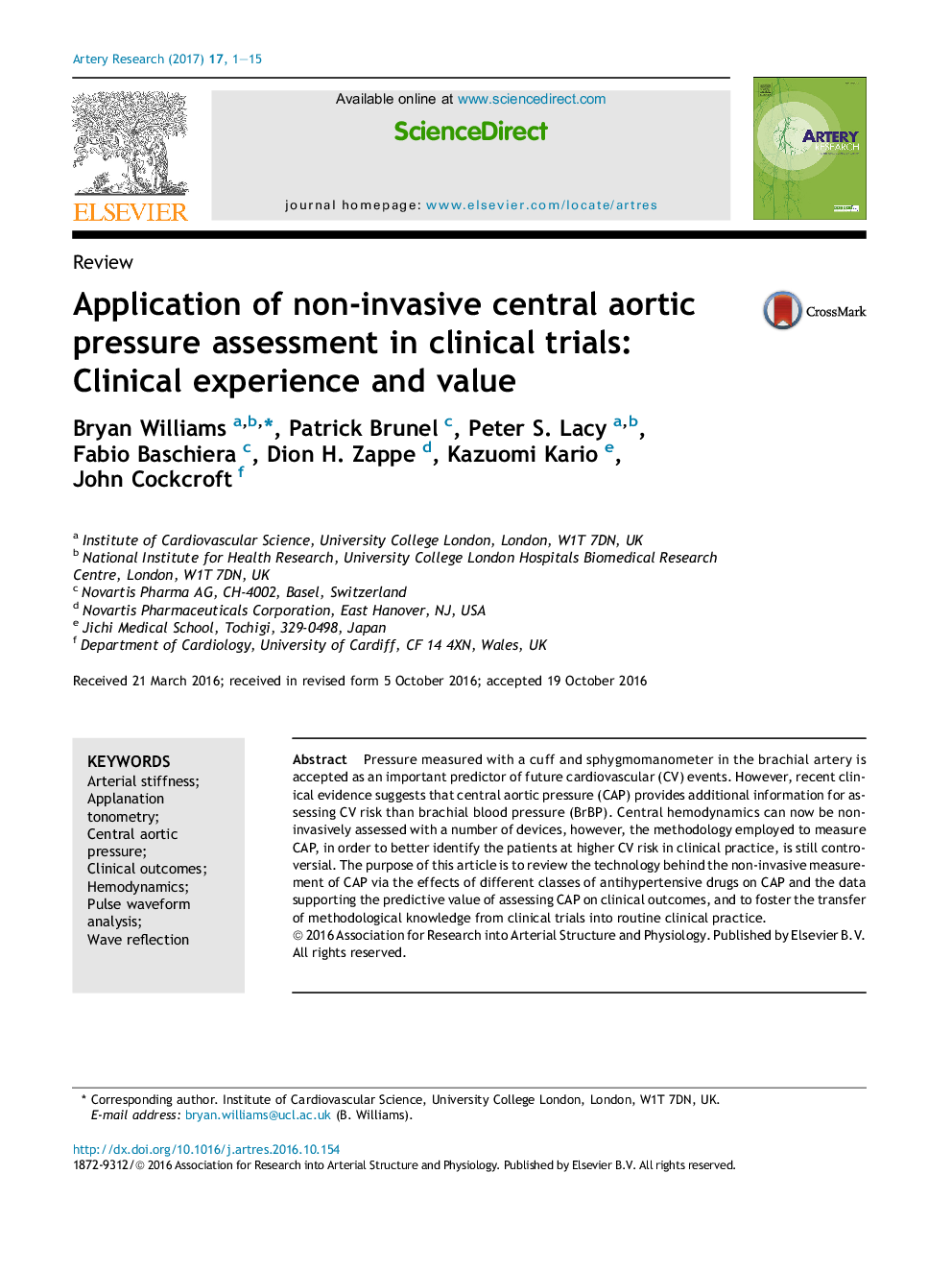| Article ID | Journal | Published Year | Pages | File Type |
|---|---|---|---|---|
| 5599172 | Artery Research | 2017 | 15 Pages |
Abstract
Pressure measured with a cuff and sphygmomanometer in the brachial artery is accepted as an important predictor of future cardiovascular (CV) events. However, recent clinical evidence suggests that central aortic pressure (CAP) provides additional information for assessing CV risk than brachial blood pressure (BrBP). Central hemodynamics can now be non-invasively assessed with a number of devices, however, the methodology employed to measure CAP, in order to better identify the patients at higher CV risk in clinical practice, is still controversial. The purpose of this article is to review the technology behind the non-invasive measurement of CAP via the effects of different classes of antihypertensive drugs on CAP and the data supporting the predictive value of assessing CAP on clinical outcomes, and to foster the transfer of methodological knowledge from clinical trials into routine clinical practice.
Keywords
Related Topics
Health Sciences
Medicine and Dentistry
Cardiology and Cardiovascular Medicine
Authors
Bryan Williams, Patrick Brunel, Peter S. Lacy, Fabio Baschiera, Dion H. Zappe, Kazuomi Kario, John Cockcroft,
